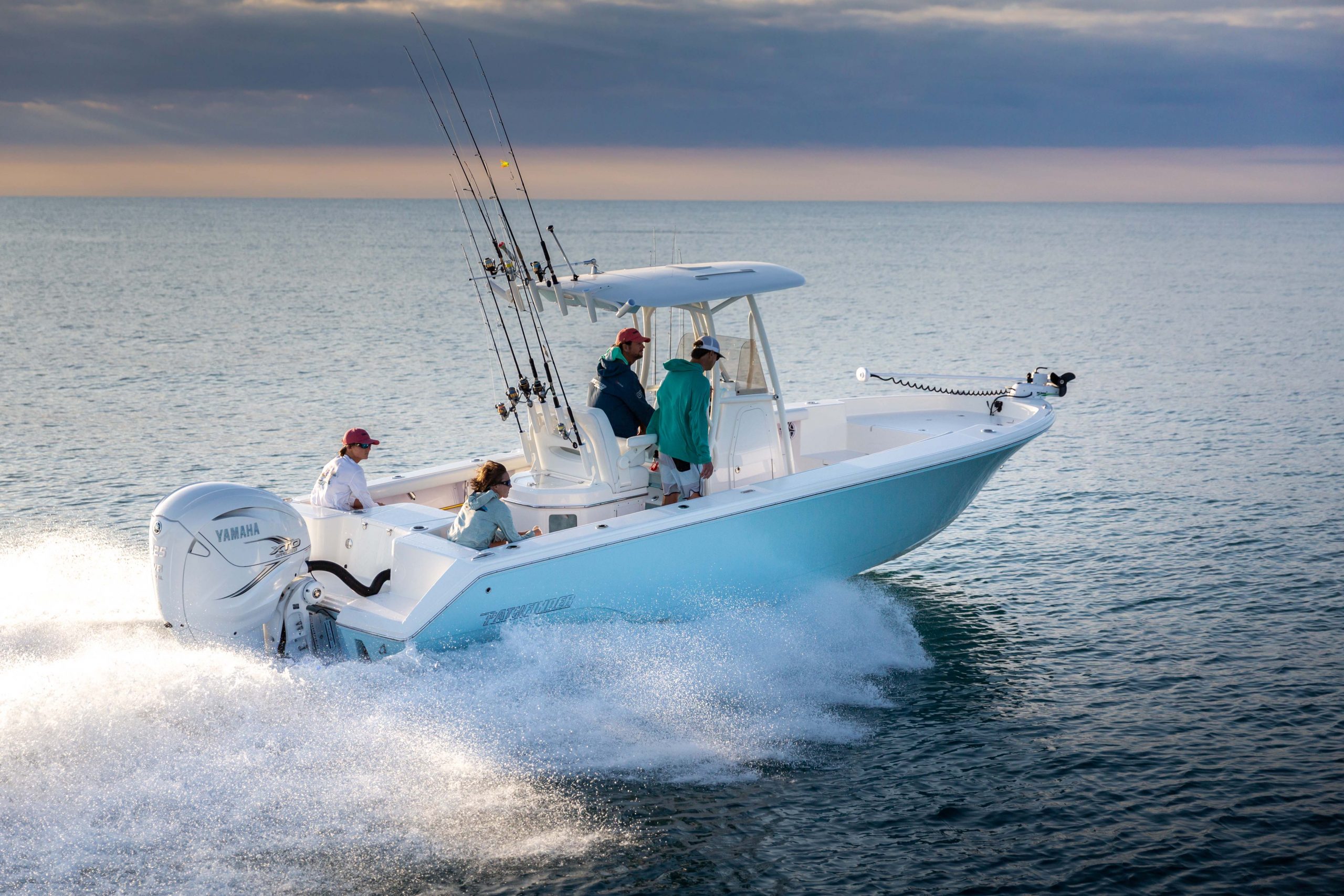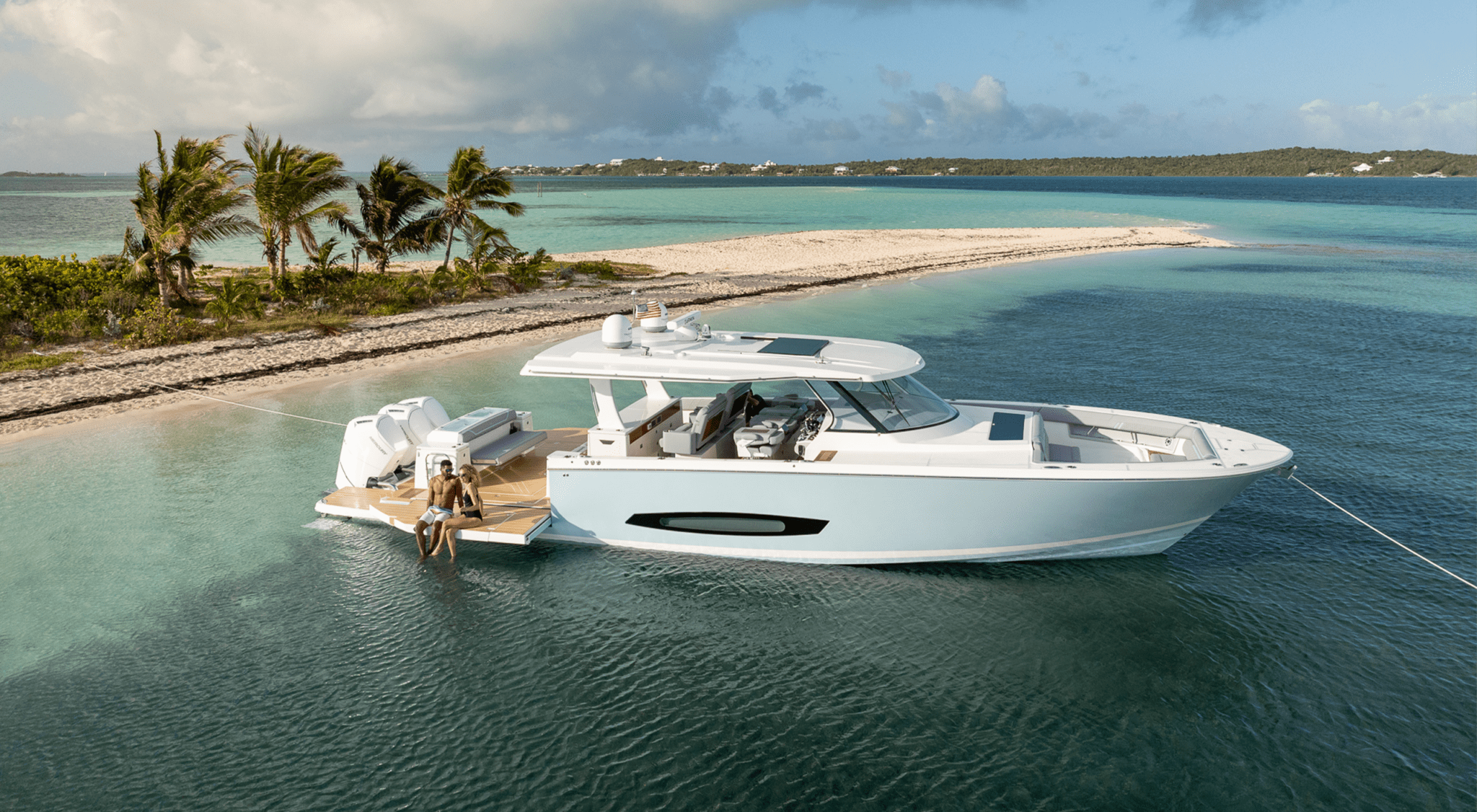
Schooner
The schooner is a distinct type of sailboat characterized by its specific design and rigging arrangements, offering a nostalgic nod to the rich history of seafaring. Traditionally, schooners have been appreciated for their graceful lines and majestic presence on the water. These vessels are equipped with two or more masts, with the foremast typically shorter than the mainmast, a defining feature of the schooner's silhouette. While they hearken back to times of old, modern schooners blend classical aesthetics with contemporary materials and technology to satisfy both sailing enthusiasts and history buffs alike.
Pricing and purchase options for schooners vary widely depending on factors such as size, age, condition, and pedigree. Prospective buyers seeking to own these vessels can find a range of models from newly built replicas to well-preserved antiques that come with their own individual stories. The market offers a vast platform for comparisons with other boat models, providing insights into the uniqueness of schooners against other types of sailboats. Whether one is looking to embark on sailing adventures, embrace the challenges of sailing a traditional rig, or simply own a piece of maritime heritage, the schooner remains a compelling choice.
Key Takeaways
- Schooners are recognized for their traditional design with multiple masts and a nostalgic appeal.
- The market for schooners offers a spectrum of prices and models, catering to diverse preferences and requirements.
- Modern schooners blend historic charm with contemporary features, continuing their legacy as cherished sailing vessels.
Schooner Specifications
Schooners are known for their unique sailing vessel design, featuring multi-masts with a typical foremast that is smaller than the mainmast. This section delves into the intricacies of their design and structure, dimensions, and performance capabilities, presenting specifics that are vital for understanding the distinctiveness of schooner sailboats.
Design and Structure
A schooner sailboat is distinguished by its hull and deck layout, tailored to enhance maritime performance. The masts play a pivotal role in a schooner's operation, traditionally comprising a foremast and a mainmast with gaff-rigged sails, although variations exist. The rigging refers to the complex network of lines supporting and maneuvering the sails, which are key to harnessing the wind's power. Schooners may feature different types of rigs, such as the staysail schooner or the topsail schooner, each with specific advantages in speed and maneuverability.
Size and Dimensions
The size of a schooner can greatly vary, but a typical two-masted schooner ranges in size quite broadly. A three-masted schooner, a less common variant, is generally larger and possesses more sails. The collective area of all sails and the hull dimensions directly influence a schooner's cargo capacity and suitability for different types of sailing.
- Two-masted schooner: Length varies from 30 feet to over 100 feet
- Three-masted schooner: Often exceeds 100 feet in length
Performance
Schooner sailboats are valued for their speed and elegance on the water. Their performance is a product of sail configuration and hull design, with many modern schooners incorporating advanced materials and design principles to enhance their sailing characteristics. The schooner's gaff rig allows it to carry a large amount of sail area, which, when combined with a sleek hull design, can lead to impressive speeds and efficient passage-making abilities.
Pricing and Purchase Options
When investing in a schooner, buyers will encounter a range of pricing options influenced by factors such as the vessel's age, size, condition, and level of customization. The market presents opportunities for new purchases, the pre-owned market, and personalized customization, each with its own cost structure.
New Schooner Pricing
New schooners come with various price tags which are influenced by their size and the prestige of the builder. Entry-level prices for smaller, new schooners start at approximately $65,000, accommodating those on a more modest budget. However, for larger and more luxurious models equipped with the latest technology, the prices can soar as high as $12,932,292. It's crucial for potential buyers to establish their budget and needs before engaging with a seller.
Pre-Owned Market
The pre-owned market for schooners presents a multitude of pricing levels. A used schooner's price reflects its condition, maintenance history, and upgrades or refits. Purchasers can find boats starting around $12,876, with the potential to climb depending on the vessel’s history and specifications. When considering a pre-owned schooner, buyers should factor in additional expenses such as surveys, repairs, and possibly retrofitting.
Customization Costs
For buyers desiring a tailor-made experience, custom schooners offer the chance to build a vessel that meets specific desires and needs. Customization costs are highly variable, with the final price reflecting the complexity of the design, the quality of materials chosen, and the labor involved in construction. Industry professionals provide guidance on the costs of custom features, which could substantially increase the baseline price, and additional custom components can lead to significant financial investment. Financing options are often available for those looking to spread out the expense of their bespoke schooner.
Schooner Comparisons
When comparing schooner sailboats, understanding their unique features against other sailboat models is crucial for potential buyers or sailing enthusiasts. These vessels are often admired for their classic design and aesthetic, as well as their performance characteristics.
Similar Sailboat Models
Schooners possess distinct traits that set them apart from other sailing vessels. Notable for having two or more masts with the aft (rear) mast taller or equal in height to the forward mast(s), they are often compared to other classic designs such as the ketch or the yawl. For example, an Alden schooner presents a blend of traditional craftsmanship with modern performance, making it a benchmark for comparison.
Comparable boat models like the Dutch clipper and the Baltimore clipper share similarities with the schooner in terms of historic significance and age of design, though they have different mast configurations. On platforms such as YachtWorld, one can find a range of schooner-priced options, some of which can go as low as $12,783, scaling up to premium models priced at millions of dollars.
Schooner Vs. Other Sailing Vessels
The primary difference between a schooner and a monohull sailboat is in the rig configuration. While both are sailing vessels, the monohull typically has one mast, but schooners have at least two, allowing for a different sailing experience and potentially more sail area.
The debate of schooner vs. other sailing vessels often centers on performance and handling. Schooners are historically renowned for their ability to sail closer to the wind and were extensively used for trade and fishing due to their excellent upwind capabilities. Modern sailing enthusiasts might compare a schooner with contemporary yachts, noting that while schooners emanate timeless elegance, yachts can offer more advanced technological features and often a higher level of comfort.
The choice between a schooner and another type of sailboat, such as a monohull or a luxury yacht, may come down to the sailor's preferences for traditional aesthetics, sailing performance, and the type of sailing—whether it be casual day sailing, competitive racing, or long-distance cruising.
Notable Schooner Models
Schooners have been important in maritime history for their speed and elegance, while today's luxury schooners blend classic designs with modern amenities. This section explores both historically significant schooners and contemporary luxury vessels.
Historical Significance
Bluenose, a Canadian fishing and racing schooner from the early 20th century, remains an icon due to its unbeatable record at the America's Cup. Her legacy is so enduring she’s been featured on postage stamps and coins. Another famous historical model is the Baltimore Clipper, a variety of schooner known for its speed, making it a favored choice during wartime and among privateers.
Modern Luxury Schooners
Cherubini offers handcrafted, opulent schooners that harken back to the classic era with modern performance tweaks. The Passport series brings luxury to the forefront, often custom-designed to the owner's preferences. These schooners typically feature the latest technology, sumptuous interiors, and are built for comfort and exceptional sailing experiences.
Notably, the schooner featured in Pirates of the Caribbean exemplifies the collective fascination with blending historic designs with the magic of modern cinema. However, unlike the fictional representations, today's luxury schooners, such as the newly launched 416-foot KORU by Oceanco, prioritize innovative engineering and sophisticated craftsmanship.
Sailing Adventures and Challenges
Sailing a schooner offers a unique blend of adventure and challenge that attracts both seasoned sailors and passionate amateurs. These vessels, known for their elegance and historical significance, provide a distinctive way to experience the sea.
Crossing the Atlantic
The Atlantic Ocean's vastness and unpredictability make crossing it a milestone for any sailor. A schooner embarking on such a journey faces the full force of the ocean's weather conditions, from dead calms to roaring gales. On average, a schooner might take anywhere from three to six weeks for an Atlantic crossing, the duration being heavily dependent on weather conditions and the vessel's specifications. Sailors must be well-prepared with navigation skills and ample provisions. Famous schooners like the America, which captured the first America's Cup, have achieved acclaim through such legendary voyages.
Competitive Sailing
While schooners are not as commonly used in competitive sailing today, their involvement in historic races still resonates within the sailing community. Events like the America's Cup have seen these graceful vessels in their element, where the focus on teamwork, strategy, and precise maneuvering comes to the forefront. Competitive sailing demands not only a mastery of sailing techniques but also a depth of knowledge about the sailing vessel's handling and performance capabilities under various conditions.
Recreational Use
On the recreational side, schooners provide a more laid-back sailing adventure perfect for groups and passengers looking to enjoy a day on the water. Though they demand a certain level of skill to operate, modern schooners are often equipped with amenities that make them suitable for leisurely cruises and day trips. The majesty of these sailing vessels is best appreciated when hoisting the sails for a serene sunset cruise or a weekend exploring coastal waters. Whether it's a classic wooden model or one with modern enhancements, a schooner offers a sailing experience unlike any other.
Maintenance and Upkeep
Schooner sailboats require a structured maintenance plan to preserve their classic beauty and ensure safe sailing. It involves regular upkeep, periodic refitting, and the possibility of modern upgrades.
Regular Maintenance
Schooners demand consistent attention to their unique rig and sails. One should inspect the rigging for wear and corrosion, and treat the sails with care to avoid undue stress and damage.
- Deck & Hull Maintenance: Regular cleaning, sealing, and varnishing preserve the integrity and aesthetic of the deck and hull.
- Sails & Rigging: Routine check-ups and repairs to the sails and rigging are crucial, especially considering the complex gaff-rigged system often found on schooners.
Refitting and Restoration
For older schooners, refitting and restoration can be extensive, involving both structural and aesthetic components.
- Hull Restoration: Includes repairing or replacing damaged wood or fiberglass.
- Custom Rigging: May entail customizing and updating the rigging components for better performance and durability.
Refitting a schooner often involves a significant investment, depending on the level of restoration required to bring the vessel back to its former glory.
Modern Upgrades
Modernizing a schooner may involve incorporating electric systems or updating navigation equipment.
- Electric Systems: Installing modern electric systems can improve the functionality and safety of the vessel.
- Rigging: Advanced materials and designs can enhance the rigging system, providing better handling and reducing maintenance.
Adopting modern technology on a classic schooner provides a balance between preserving traditional sailing characteristics and enjoying contemporary conveniences.
Operational Aspects
The operational aspects of a schooner sailboat encompass crew requirements, versatility in various marine environments, and adherence to strict safety protocols to ensure the well-being of passengers and crew. These facets are crucial for the effective and safe management of a schooner.
Crew Requirements
A schooner typically requires a skilled crew to operate efficiently, owing to its complex rigging and multiple masts. The number of crew members needed can vary based on the schooner's size and the nature of its voyage. While smaller schooners may need as few as two experienced sailors, larger vessels used for cargo or passenger transport might require a crew that includes a captain, mates, deckhands, and sometimes a cook or other specialists.
Schooner Versatility
Schooners are renowned for their adaptability in a range of sailing conditions. With their fore-and-aft sails and generally two or more masts, schooners can navigate shallow waters making them ideal for cargo transport and fishing. They also perform well in offshore passages and are enjoyed by recreational sailors for their balance and ease of handling.
Safety Protocols
Maintaining rigorous safety protocols is paramount for any sailboat, particularly schooners due to their size and complexity. These protocols include regular inspection and maintenance of all sails, masts, and rigging to prevent malfunctions. Adequate safety gear, including life jackets, life rafts, and signaling devices, must be on board and easily accessible. In addition, crew members should be well-versed in emergency procedures and conduct regular safety drills.
Frequently Asked Questions
When considering the purchase or comparison of schooner sailboats, there are several factors that potential owners may question. This section provides answers, focusing on specifications, pricing, comparable models, and various aspects of schooner ownership and design.
What specifications should be considered when comparing schooner sailboats?
Key specifications for comparing schooner sailboats include length overall (LOA), beam, draft, displacement, sail area, and rigging type. Additionally, construction materials, age, and condition are important factors in assessing a schooner's performance and value.
What is the average price range for a used schooner sailboat?
The price for a used schooner sailboat can vary broadly from tens of thousands to several million dollars, depending on size, age, condition, and craftsmanship. Smaller, older schooners may be on the market for less, while large, well-maintained, or traditionally crafted vessels command higher prices.
Which boats can be considered comparable models to traditional schooners?
Comparable models to traditional schooners include brigantines, ketches, and yawls, as these are also multi-mast sailing vessels with similar rigging complexities. However, each has distinct rig configurations, with schooners typically having fore-and-aft rigged sails on two or more masts, where the aft mast is taller.
How does the cost of owning and maintaining a schooner compare to other types of sailboats?
The cost of owning and maintaining a schooner generally aligns with the cost of owning large, multi-mast sailboats. They require significant maintenance, particularly wooden schooners, which may need more regular upkeep compared to modern fiberglass hulls, potentially incurring higher costs in the long run.
What are the key differences in construction and design between steel and wooden schooners?
Steel schooners offer durability and strength, making them less prone to damage from minor impacts and pests such as termites. Wooden schooners carry a traditional aesthetic and may have advantages in weight, but necessitate continuous maintenance to protect against rot and deterioration.
In terms of market availability, how do schooners in Europe compare to those in the USA?
Market availability of schooners in Europe often features a larger array of historic and classic vessels due to the region's extensive maritime history. In the USA, the market includes many schooners that are used for a combination of private ownership and commercial purposes, such as charter and educational programs.
















